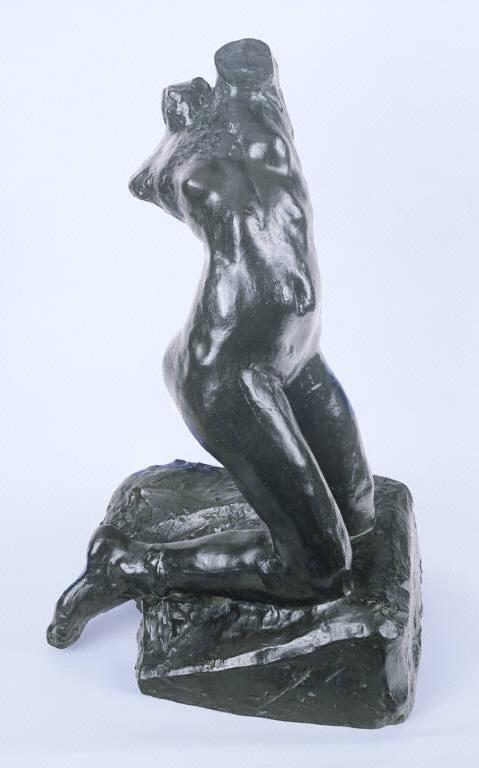Female Torso, Kneeling, Twisting Nude
Auguste Rodin ( not dated/cast 1984 )

Like many artists, Auguste Rodin discovered his own creative approach through his knowledge of artistic tradition. In his youth, he spent mornings at the Petite École studying craft and design and afternoons in the galleries of the Louvre copying Classical, Renaissance, and Baroque sculptures. After an awe-inspiring trip to Italy in 1875, where he saw masterworks by Donatello and Michelangelo, Rodin changed his artistic direction. For Rodin, art was true to nature, and much of his sculpture expresses the human psyche in extreme physical states, from inner turmoil to overwhelming joy. When conceiving a work, rather than focusing on idealized forms, he often retained the markings of his sculptural process. This dynamic, partial figure may have developed from studies for Rodin’s monumental project, The Gates of Hell (1880–1900).